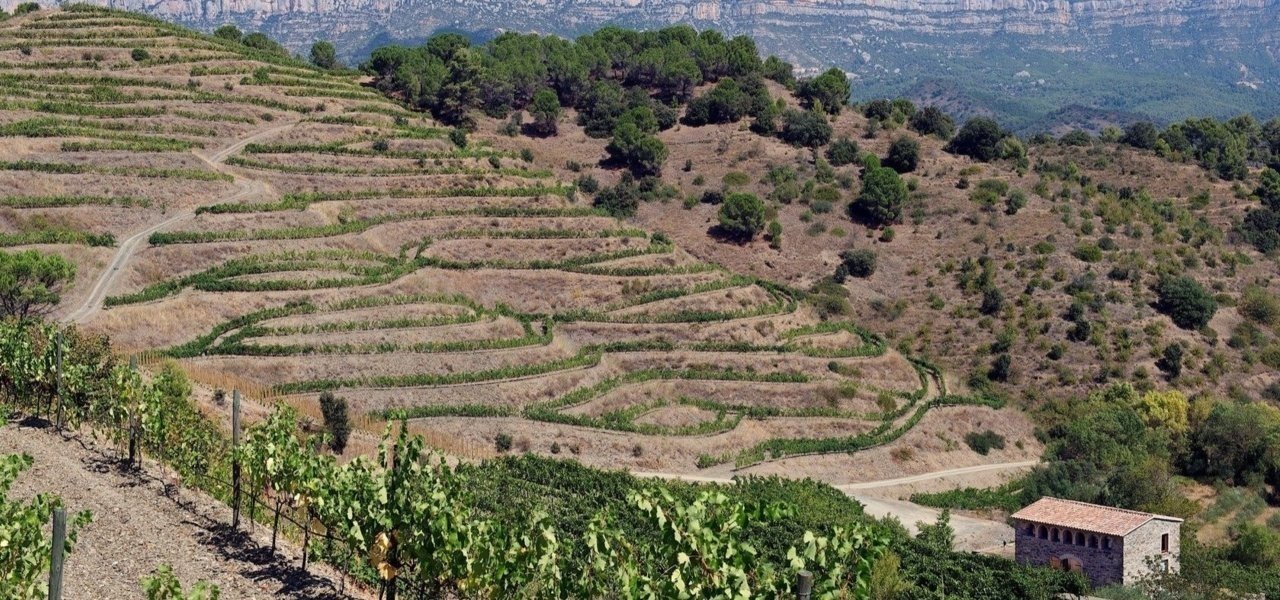Compared to the rest of the country, the Priorat wine region to the south-west of Catalunya produces very few grapes but, courtesy of some passionate and innovative winemakers, those harvested are of exceptional quality and known for their character and complexity.
Together with the more renowned La Rioja, Priorat is one of only two regions to qualify as DOCa – the highest status for a Spanish wine region according to strict regulations. The traditional grape is the red Garnacha tinta (Grenache), which is typically used for single bottling or as a ‘Bordeaux style’ blend with French varieties.
The usual practice is to produce vino de guarda (aged wine), which has been stored in oak barrels for 18 months, followed by 6 months in a bottle and ideally consumed two years after that – although the intense, mineral rich flavours are worth the wait.
Despite the demanding environment of struggling hills with vineyards grown on steep terraces that are harvested from enormous staircases, the Priorat wine region has a natural charm that seems to exist an age away from nearby Barcelona.
The untouched landscape is only interrupted by quaint villages, stone farm houses, medieval castles and hidden monasteries. The lower floors of certain centuries-old houses hide winemakers working to produce only a few thousand bottles that will go on to garner international acclaim.
Consequently, the Priorat wine region is a prime destination for wine enthusiasts, especially those with a discerning taste. At Wine Paths, our local experts can organise exclusive luxury tours of the region that can be tailor-made to your needs, ensuring every detail is taken care of.
Priorat is certainly experiencing a renaissance at the moment, both in terms of international recognition and in the spate of new wineries and vineyards that have brought a new-found belief to the region. And, despite having to wage battle with the harsh terrain, many of the area’s viticulturalists still welcome guests to share their passion with them.
As well as experiencing the wonderful wines on offer, visitors can also explore some significant stops on the Priorat wine route:
Falset and the Castell del Vi – Falset, the capital of Priorat, is most known for the modern internal architecture of its interesting wine museum the Castell del Vi, which has three stunningly designed floors within the walls of an old castle.
The Montsant Massif – Declared a national park in 2002, the Montsant Massif is seen as a symbol of the Priorat wine region where visitors can marvel at stunning views stretching out to the sea.
The village of Siurna – This small but beautiful little village settled high in the hilltops has only 37 inhabitants. The views of the surrounding mountains are incredible, but the village’s early heritage can be seen through the ruins of an old Muslim fortress.
Prades – Known as ‘Vila vermella’, this town immediately stands out from the surrounding greenery due to the characteristic red colour of its building – which are illuminated into beautiful scarlet tones with every sunrise and sunset.
Tarragona – This town bears many hallmarks of its former Roman Empire heritage, including the remains of a second century amphitheatre where 12,000 spectators once watched gladiators and wild beasts fight for their lives.
Take a look at our Spain's destination page for more information on our exclusive tours, luxury stays and unforgettable experiences and start planning a visit to the Priorat wine region.
If you're interested in one of our Catalonia Wine Tours, please visit this link.






